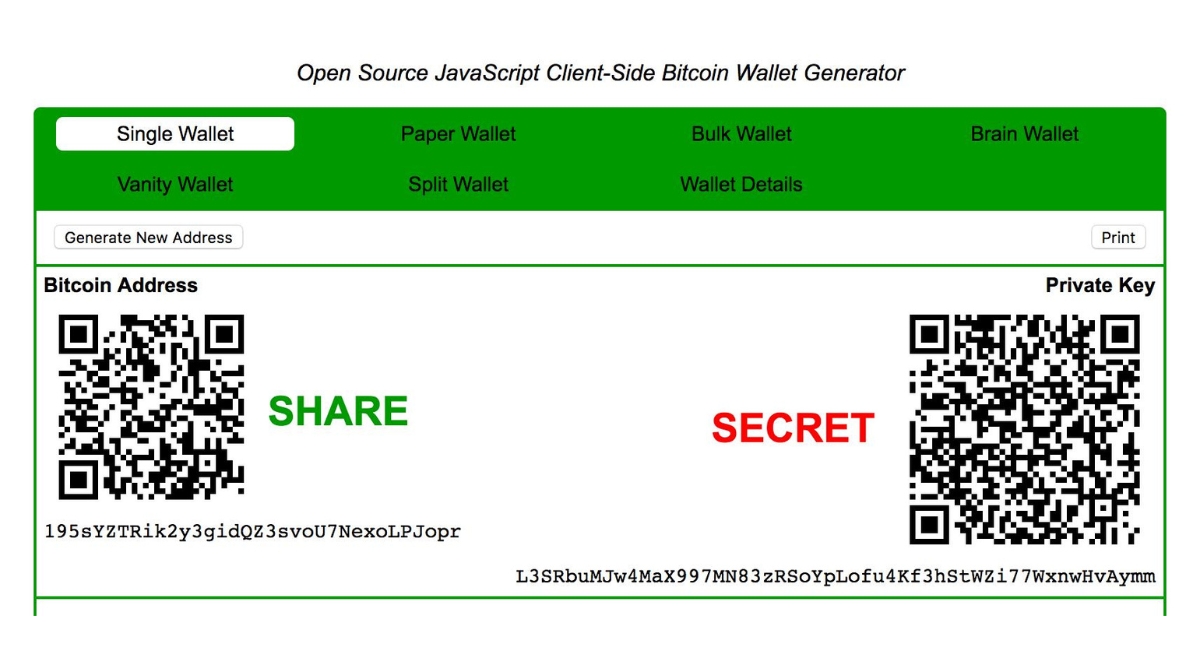Introduction
Bitcoin is a cryptocurrency that has gained significant attention and popularity in recent years. As a digital form of money, it operates on a decentralized network known as blockchain. What sets Bitcoin apart from traditional forms of currency is that it is not backed by a physical asset or controlled by any central authority. Instead, its value is derived from a combination of factors, including the underlying technology, the network of users, and the level of trust and adoption it receives.
In today’s modern financial system, most countries use fiat currency as their primary form of money. Fiat currency, such as the US dollar or the euro, is not backed by any physical commodity, such as gold or silver. Its value is essentially based on the trust and confidence that people have in the issuing government or central bank. However, this system has its limitations and vulnerabilities, as it is subject to inflation, government influence, and economic uncertainties.
In the past, the gold standard provided a mechanism for backing currencies. Under the gold standard, each unit of currency was convertible into a fixed amount of gold. This system ensured the stability and reliability of money, as it was tied to a physical commodity with intrinsic value. However, the gold standard was abandoned in the 20th century, and countries shifted towards a fiat currency system.
Central banks play a crucial role in the management of a nation’s currency. They control the money supply, set interest rates, and regulate the financial system. Their objective is to maintain price stability, promote economic growth, and ensure the stability of the financial system. However, the centralized nature of these institutions has its drawbacks, including the potential for corruption, political interference, and limited transparency.
Fiat Currency
Fiat currency is the dominant form of money used in most countries today. It is essentially money that is declared by the government to be legal tender and is not backed by any physical commodity like gold or silver. The value of fiat currency comes from the trust and confidence that people place in the issuing government and central bank.
One of the advantages of fiat currency is its flexibility. Central banks have the ability to control the money supply, adjust interest rates, and implement various monetary policies to manage the economy. This allows for a certain degree of stability and control in the financial system, especially in times of economic crises or fluctuations.
However, there are also some drawbacks to fiat currency. One of the main concerns is inflation. Since fiat currency is not tied to a physical asset, central banks have the power to increase the money supply, which can lead to a decrease in purchasing power over time. Inflation erodes the value of money and can negatively impact the economy, especially for individuals on fixed incomes or those who hold large amounts of cash.
Another issue with fiat currency is the potential for government interference and manipulation. Governments can manipulate interest rates and control the money supply to stimulate or slow down economic growth. While this can be beneficial in certain situations, it also opens the door for political influence, corruption, and misuse of power.
Furthermore, fiat currency is subject to economic uncertainties and can be impacted by factors such as government policies, geopolitical events, and market speculation. Exchange rates between different fiat currencies can fluctuate, affecting international trade and investment.
Despite these concerns, fiat currency remains the primary form of money in most countries due to its widespread acceptance and the stability provided by central banks. However, the emergence of cryptocurrencies like Bitcoin has sparked discussions and debates about the future of fiat currency and the potential for alternative forms of money that are not controlled by central authorities.
Gold Standard
The gold standard was a monetary system in which the value of a country’s currency was directly linked to a fixed quantity of gold. Under this system, each unit of currency could be exchanged for a specific amount of gold. The gold standard provided stability and confidence in the monetary system, as the value of money was anchored to a tangible and universally recognized commodity.
One of the main advantages of the gold standard was that it limited the ability of governments and central banks to manipulate the money supply. Since the supply of gold is limited, the value of the currency linked to it was relatively stable and resistant to fluctuations. This stability provided a solid foundation for economic growth and trade.
The gold standard also acted as a disciplining mechanism for governments. Since the value of their currency was tied to gold, excessive government spending and budget deficits were limited by the need to maintain a sufficient gold reserve to back the currency. This ensured a level of fiscal responsibility and prevented runaway inflation.
However, the gold standard also had its drawbacks. One of the main limitations was the inflexibility it imposed on governments during economic crises. In times of recession or financial instability, central banks were restricted in their ability to expand the money supply to stimulate the economy. This lack of flexibility could prolong economic downturns and hinder recovery efforts.
Another challenge of the gold standard was the need for countries to maintain sufficient gold reserves. This required substantial resources for mining and acquiring gold, which could be costly and difficult to sustain in the long term. Additionally, the fixed exchange rates under the gold standard restricted international trade and posed challenges for countries with imbalanced economies.
The gold standard eventually started to decline in the early 20th century, especially as countries faced the need for increased flexibility during periods of war and economic depression. In 1971, the United States ended the convertibility of the US dollar to gold, effectively abandoning the gold standard. Since then, most countries have adopted fiat currency systems, where the value of money is not tied to a physical commodity like gold.
While the gold standard is no longer in practice, its impact and influence on monetary systems and economic theory remain significant. It serves as a historical reference and a point of comparison when evaluating the strengths and weaknesses of different monetary systems, including the rise of cryptocurrencies like Bitcoin.
Central Banks
Central banks play a crucial role in the modern financial system as the primary authority responsible for managing a nation’s currency and regulating the banking sector. Their main objective is to maintain price stability, promote economic growth, and ensure the stability of the financial system.
One of the key functions of central banks is controlling the money supply. They have the authority to print and issue currency, as well as remove it from circulation when necessary. By adjusting the money supply, central banks can influence interest rates, inflation rates, and the overall state of the economy.
Central banks also serve as the lender of last resort to commercial banks, providing liquidity to maintain stability in the financial system. When banks face liquidity shortages or potential failures, central banks can provide emergency loans or financial support to prevent widespread financial crises.
In addition, central banks have the responsibility to oversee and regulate the banking industry. They establish and enforce regulations to ensure the safety and soundness of banks, protect the interests of depositors, and prevent excessive risk-taking. Regulation and supervision of banks help maintain the stability and integrity of the financial system and prevent systemic disruptions.
Transparency and accountability are important aspects of a central bank’s role. While central banks are often independent from political influence, they are accountable to the government and the public. Regular reporting, communication, and policy transparency are vital to fostering trust and confidence in the central bank’s decision-making process.
However, the centralized nature of central banks also poses challenges and concerns. Critics argue that their independence from government control may lead to undue influence from special interest groups or big financial institutions. There is also the risk of central banks pursuing policies that favor certain sectors or exacerbate income inequality.
The onset of digital currencies and decentralized systems, like Bitcoin, has sparked discussions about the role and relevance of central banks in the future. While central banks continue to be the backbone of the traditional financial system, the emergence of alternative forms of currency raises questions about potential disruptions and the need for adaptation in the face of evolving technologies.
Cryptography
Cryptography is a fundamental component of Bitcoin and other cryptocurrencies. It is the science of encoding and decoding information to ensure secure communication and prevent unauthorized access or modification of data. In the context of cryptocurrencies, cryptography plays a vital role in ensuring the integrity and security of transactions.
Bitcoin utilizes several cryptographic techniques to achieve its objectives. One of the most prominent ones is public-key cryptography, also known as asymmetric cryptography. This involves the use of a public key and a private key, where the public key is used to encrypt the transaction data, and the private key is used to decrypt and authorize the transaction.
The use of public-key cryptography ensures that transactions are secure and transparent. Each user has a unique pair of public and private keys, making it virtually impossible for unauthorized individuals to tamper with or forge transactions. This cryptographic security provides a high level of trust and confidence in the Bitcoin network.
Another cryptographic technique employed by Bitcoin is the digital signature. A digital signature is generated using the private key and added to the transaction, verifying the authenticity of the sender. This signature guarantees that the transaction cannot be altered or tampered with once it has been signed, further enhancing the security and immutability of the transaction history.
The cryptographic nature of Bitcoin has significant implications for privacy and anonymity. While Bitcoin transactions are pseudonymous, meaning that they are not directly linked to a person’s identity, the transaction history is publicly visible on the blockchain. This transparency allows for the verification and validation of transactions by all participants in the network.
However, the pseudonymous nature of Bitcoin has also sparked debates around privacy concerns. As the blockchain is publicly accessible, there has been a focus on developing technologies and protocols to enhance privacy while maintaining the security and transparency of the network.
Cryptography is a critical component not only in securing cryptocurrency transactions but also in ensuring the overall integrity and trustworthiness of the decentralized network. It provides the foundation for secure communication and authentication, contributing to the resilience and robustness of cryptocurrencies like Bitcoin.
Blockchain Technology
Blockchain technology is at the core of Bitcoin and has revolutionized the way transactions are recorded and verified. A blockchain is a distributed, decentralized digital ledger that securely records and stores a history of all transactions in a network. It operates on a peer-to-peer basis, allowing participants to transact directly without the need for intermediaries.
The blockchain is made up of a series of interconnected blocks, with each block containing a list of transactions. These blocks are linked together using cryptographic hashes, creating an immutable and transparent chain of transaction history. Because every transaction is recorded on multiple copies of the blockchain distributed across the network, it is extremely difficult for anyone to alter or manipulate the data.
One of the key advantages of blockchain technology is its transparency. The decentralized nature of the blockchain ensures that all participants in the network have access to the same information. This transparency promotes trust and accountability, as anyone can verify and audit the transaction history.
Another crucial aspect of blockchain technology is its security. The use of advanced cryptographic techniques ensures that transactions are secure and tamper-proof. The decentralized nature of the blockchain also eliminates a single point of failure, making it highly resistant to hacking and fraud attempts.
In addition to security and transparency, blockchain technology offers the potential for increased efficiency and cost savings. By eliminating intermediaries and streamlining the verification process, transactions can be completed faster and at a lower cost. This has implications beyond financial transactions and has the potential to transform various industries by reducing the need for middlemen and improving operational efficiency.
Blockchain technology is not limited to Bitcoin and cryptocurrencies. Its potential applications extend to various sectors, including supply chain management, healthcare, real estate, voting systems, and more. The ability to create transparent and secure records that are accessible to all network participants has the potential to revolutionize the way transactions and data are managed.
However, there are also challenges and limitations associated with blockchain technology. The scalability of blockchain networks, especially in terms of processing power and transaction speed, is still an area of active research and development. Additionally, the energy consumption required for mining and maintaining the blockchain has raised concerns about its environmental impact.
Despite these challenges, blockchain technology has shown great promise as a transformative technology that could reshape industries and enhance trust and security in digital transactions and data management. Its decentralized and transparent nature has the potential to revolutionize the way we transact and interact in the digital world.
Decentralization
Decentralization is a fundamental principle of cryptocurrencies like Bitcoin. It refers to the distribution of authority, control, and decision-making across a network, as opposed to a centralized authority or institution. The decentralized nature of cryptocurrencies offers several advantages and challenges compared to traditional centralized systems.
One of the key benefits of decentralization is increased resilience and security. In a decentralized network, there is no single point of failure that can be exploited or targeted by malicious actors. The distribution of authority and decision-making among multiple participants makes it more difficult to manipulate or control the system, enhancing the overall security and trustworthiness of the network.
Decentralization also promotes freedom and autonomy. Participants in a decentralized network have more control over their own funds and personal information. They are not subject to the rules and regulations imposed by centralized authorities or intermediaries. This financial sovereignty and independence resonate with individuals seeking greater control over their financial assets and data.
Another advantage is censorship resistance. Centralized systems can be susceptible to censorship or restrictions imposed by governments or other authorities. In a decentralized network, transactions and data are distributed among multiple participants, making it difficult for any single entity to censor or control the flow of information.
However, decentralization also poses challenges. One of the main concerns is the scalability of decentralized systems. As the number of participants and transactions increases, the network can face performance and congestion issues. Improving scalability while maintaining decentralization is an ongoing challenge for blockchain technologies.
Furthermore, decentralization can also lead to a lack of accountability and governance. Without a central authority, decision-making processes and dispute resolutions can be more complex and time-consuming. Balancing decentralization with efficient governance mechanisms is crucial to ensuring the long-term sustainability and effectiveness of decentralized systems.
Despite its challenges, the concept of decentralization has garnered significant attention and interest, not only in the realm of cryptocurrencies but also in other domains such as governance, social networks, and data management. The potential of decentralization to empower individuals, increase security, and foster innovation has the potential to reshape various industries and systems in the future.
Network Nodes
In the context of cryptocurrencies, network nodes are essential components of the decentralized network infrastructure. A node refers to a device or computer that participates in the validation and transmission of transactions within the network. Each node maintains a copy of the blockchain, ensuring the consistency and integrity of the network.
The network nodes are responsible for validating transactions and adding them to the blockchain. When a transaction occurs, it is broadcasted to the network, and each node independently verifies its validity. This verification process involves checking the transaction against predefined rules and consensus mechanisms to ensure that it follows the network’s protocol.
Nodes are interconnected, forming a peer-to-peer network where transactions are shared and propagated. This decentralized network architecture ensures that no single node is in control of the entire network. Each node has an equal role in maintaining the stability, security, and consensus of the network.
There are different types of network nodes within a cryptocurrency network. Full nodes, also known as network nodes or validating nodes, store a complete copy of the blockchain and participate in the consensus process by validating transactions and blocks. They contribute to the decentralization and security of the network by independently verifying the cryptographic signatures and rules of the protocol.
Other types of nodes include lightweight or partial nodes, which store a subset of the blockchain without participating in the consensus process. These nodes rely on full nodes to obtain and verify transactions. Though they offer less security and decentralization, lightweight nodes can still interact with the network and participate in transactions.
Nodes can also serve additional functions, such as mining nodes. Mining nodes use computational power to solve complex mathematical problems and add new blocks to the blockchain. By doing so, they contribute to the consensus and security of the network and are rewarded with newly minted cryptocurrency.
The presence of a diverse set of network nodes is crucial for maintaining the health and integrity of a decentralized network. It ensures a distributed network architecture that is resilient to attacks and censorship attempts. Additionally, nodes help propagate transactions and blocks efficiently, contributing to the overall efficiency and performance of the network.
As the adoption of cryptocurrencies continues to grow, the number and distribution of network nodes play a significant role in ensuring the decentralization and security of the network. The more widespread and diverse the nodes, the stronger the network becomes, reinforcing the principles of decentralization and trust that cryptocurrencies aim to achieve.
Mining
Mining is a crucial process that underpins many cryptocurrencies, including Bitcoin. It serves multiple purposes, such as verifying and validating transactions, securing the network, and minting new coins. The mining process involves solving complex mathematical problems using computational power, which in turn contributes to the maintenance and operation of a decentralized cryptocurrency network.
In a proof-of-work (PoW) consensus mechanism, like that used by Bitcoin, mining involves miners competing to solve a mathematical puzzle. This puzzle requires significant computational power and resources, making it challenging to solve. Once a miner solves the puzzle, they can add a new block to the blockchain and earn a reward, typically in the form of newly minted coins.
Mining plays a vital role in the security and integrity of the network. When a miner successfully mines a block, they confirm and validate the transactions within that block. This validation ensures that each transaction adheres to the network’s rules and that the coins being transferred are legitimate. Miners collectively maintain the transparency and immutability of the transaction history, making it nearly impossible for malicious actors to manipulate or alter the blockchain.
The mining process also contributes to the decentralization of the network. Anyone with access to the necessary hardware and computational power can participate in mining. This open and permissionless nature of mining fosters a distributed network architecture, preventing any single entity from gaining control over the network. Additionally, the decentralized nature of mining enhances network security, as a malicious actor would need to control a majority of the mining power to compromise the network.
However, mining is an energy-intensive process. The computational power required to mine blocks and compete with other miners consumes a significant amount of electricity. This energy consumption has raised concerns about the environmental impact of mining, particularly in countries reliant on fossil fuel-based power generation. Efforts to increase energy efficiency and explore alternative consensus mechanisms, such as proof-of-stake (PoS), are being explored to address these concerns.
Mining is a competitive process, and miners often form mining pools to combine their computational power and increase their chances of mining a block and earning rewards. These mining pools distribute the reward among participating miners based on their contributed computing power. Pooling resources allows smaller miners to have a more consistent stream of income, albeit with a reduced individual share of the rewards.
As cryptocurrencies continue to evolve, mining is a vital component of maintaining the network’s security, validating transactions, and expanding the blockchain. However, technological advancements and the exploration of alternative consensus mechanisms are being studied to make the mining process more energy-efficient, secure, and sustainable for the long term.
Proof of Work
Proof of Work (PoW) is a consensus mechanism used by many cryptocurrencies, including Bitcoin, to validate and confirm transactions and maintain the integrity of the blockchain. It is a computational puzzle that miners must solve to earn the right to add a new block to the blockchain.
In a PoW system, miners compete against each other by solving complex mathematical problems. These problems are computationally intensive and require a significant amount of computing power and resources. The purpose of solving these puzzles is to provide proof that the miner has expended a certain amount of computational effort.
Solving the puzzle in PoW involves running multiple iterations of a mathematical function, commonly known as hashing algorithms, until a certain condition is met. The condition, usually a specific hash value that meets certain criteria, is difficult to find, but it is easy to verify once discovered. The first miner to find the solution broadcasts it to the network, and other nodes can quickly verify its correctness.
The security of PoW lies in its robustness against malicious attacks. To alter the blockchain’s history, an attacker would need to control the majority of the network’s computational power, known as a 51% attack. This is because the longest and most verified chain is considered the valid one in PoW, and it would be computationally expensive and time-consuming to achieve a majority control of the network.
The use of PoW also helps regulate the creation of new coins in the network. Miners who successfully solve the puzzle and add a new block to the blockchain are rewarded with a certain number of newly minted coins. This incentivizes miners to continue contributing their computational power to validate transactions and secure the network.
However, PoW has its limitations. One significant drawback is the energy consumption associated with solving the computational puzzles. The computational power required to mine blocks and compete with other miners consumes a substantial amount of electricity, leading to environmental concerns. In response, some cryptocurrencies are exploring alternative consensus mechanisms, such as Proof of Stake (PoS), which require less energy consumption.
Despite its drawbacks, PoW remains one of the most widely used consensus mechanisms in the cryptocurrency space. Its proven security, robustness against attacks, and ability to distribute rewards fairly among miners make it an effective method for consensus and the validation of transactions. However, as the industry continues to grow and evolve, there is ongoing research into more energy-efficient and sustainable consensus mechanisms that can offer similar or enhanced security properties.
Energy Consumption
Energy consumption is a significant aspect to consider when examining the environmental impact of cryptocurrencies, particularly those that rely on Proof of Work (PoW) consensus mechanisms. The computational power required to mine blocks and validate transactions consumes a substantial amount of electricity, leading to concerns about the sustainability and carbon footprint of these networks.
Miners participate in a competitive process to solve complex mathematical puzzles, which requires powerful hardware and energy-intensive computations. As the network grows and competition increases, the computational difficulty and energy requirements also rise. This has led to concerns regarding the environmental consequences of the energy consumption associated with mining.
Bitcoin, as the first and most well-known cryptocurrency, has faced scrutiny due to its significant energy consumption. Studies have suggested that Bitcoin mining consumes a considerable amount of electricity and generates a substantial carbon footprint. The energy consumption of the entire Bitcoin network has been estimated to be comparable to that of some small countries or industries.
Efforts are being made to address the energy consumption issue in cryptocurrencies. Some argue that the energy consumption is a necessary trade-off for the security and decentralized nature of PoW-based networks. Others advocate for the exploration of alternative consensus mechanisms, such as Proof of Stake (PoS), which require significantly less energy consumption.
In a PoS system, validators are chosen to create new blocks based on the number of coins they hold or have staked. This consensus mechanism eliminates the need for miners to solve computational puzzles, drastically reducing the energy consumption associated with mining. PoS has gained attention due to its potential to be more energy-efficient and environmentally friendly.
In addition to exploring alternative consensus mechanisms, efforts are also being made to improve the energy efficiency of mining hardware. Energy-efficient mining equipments and renewable energy sources are being utilized to mitigate the environmental impact of mining operations. Some mining farms have started to rely on renewable energy sources such as solar or wind power to power their mining rigs.
It is important to note that the energy consumption of cryptocurrencies must be considered in the context of the broader energy landscape. Traditional financial institutions and other industries also consume significant amounts of energy. However, as cryptocurrencies gain more traction and become more widely adopted, it is crucial to address their energy consumption to ensure long-term sustainability and minimize their impact on the environment.
As the cryptocurrency industry continues to evolve, finding a balance between security, efficiency, and environmental sustainability is a challenge that requires ongoing innovation and collaboration among industry participants, researchers, and policymakers.
Adoption and Acceptance
The adoption and acceptance of cryptocurrencies have been significant factors in their growth and evolution. Over the years, cryptocurrencies, particularly Bitcoin, have gained traction, attracting attention from individuals, businesses, and even governments. The level of adoption and acceptance has played a crucial role in determining the value, stability, and future prospects of cryptocurrencies.
One of the key drivers of adoption is the growing recognition of the benefits offered by cryptocurrencies. Cryptocurrencies provide individuals with greater financial autonomy, privacy, and security compared to traditional banking systems. They allow for peer-to-peer transactions without the need for intermediaries, reducing transaction costs and increasing efficiency. These advantages have motivated individuals to adopt cryptocurrencies as an alternative form of money.
Businesses have also started accepting cryptocurrencies as a form of payment. Numerous online and offline retailers now offer the option to pay with cryptocurrencies, expanding their customer base and tapping into an emerging market. Additionally, the ease of cross-border transactions offered by cryptocurrencies has made them attractive for businesses involved in international trade and remittances.
Another indicator of adoption is the integration of cryptocurrencies into traditional financial systems. Established financial institutions, such as banks and investment firms, have started offering cryptocurrency-related services, allowing their clients to buy, sell, and hold cryptocurrencies as part of their investment portfolios. This institutional adoption has contributed to the legitimacy and acceptance of cryptocurrencies in mainstream finance.
Government acceptance and regulation of cryptocurrencies also play a vital role in adoption. Some countries have embraced cryptocurrencies as a means to foster innovation and economic growth, creating regulatory frameworks to ensure consumer protection and mitigate illegal activities. Others have taken a more cautious approach, seeking to strike a balance between innovation and mitigating risks associated with cryptocurrencies.
However, widespread adoption of cryptocurrencies still faces several challenges. One of the main hurdles is scalability, as cryptocurrencies need to handle a large number of transactions efficiently to support mainstream usage. Additionally, concerns about price volatility, regulatory uncertainties, security vulnerabilities, and potential illicit use have caused hesitation among some potential adopters.
Education and awareness are also critical factors for adoption. Many people may still be unfamiliar with cryptocurrencies, their benefits, and how they work. Increasing education and providing user-friendly platforms and tools will help bridge the knowledge gap and create a more accessible environment for adoption.
Overall, as the technology matures, adoption and acceptance continue to grow. The growing interest from individuals, businesses, and governments demonstrates the increasing recognition of the potential and benefits of cryptocurrencies. Continued progress in addressing scalability, regulatory clarity, and user interfaces will pave the way for broader adoption and the integration of cryptocurrencies into everyday life.
Conclusion
Cryptocurrencies, such as Bitcoin, have emerged as a disruptive force in the world of finance and technology. They offer a decentralized and secure alternative to traditional banking systems, with the potential to revolutionize various industries and reshape the way we transact and interact digitally.
Throughout this article, we explored several key aspects of cryptocurrencies, including fiat currency, the gold standard, central banks, cryptography, blockchain technology, decentralization, network nodes, mining, proof of work, energy consumption, adoption, and acceptance.
Fiat currency, the dominant form of money today, operates on trust and confidence in government and central banks. The gold standard provided stability but was abandoned in favor of flexible fiat currency systems. Central banks regulate currencies and play a crucial role in the financial system, though their centralized nature raises concerns about transparency and accountability.
Cryptography ensures the security and integrity of transactions, while blockchain technology enables decentralized networks and transparent transaction records. Network nodes validate transactions and maintain the blockchain, while mining contributes to network security and verifies transactions through computational puzzles.
However, mining’s high energy consumption has raised environmental concerns, leading to exploration of alternative consensus mechanisms like Proof of Stake (PoS). Adoption and acceptance of cryptocurrencies continue to grow, with individuals, businesses, and even governments recognizing their benefits. Nevertheless, challenges remain, including scalability, regulatory clarity, and education.
As the cryptocurrency industry evolves, striking a balance between innovation, security, and sustainability is essential. Further advancements in technology, regulation, and user experience will be crucial for the widespread adoption and integration of cryptocurrencies into everyday life.
Overall, cryptocurrencies have the potential to reshape the future of finance, technology, and transactions. The decentralized nature, security, and potential for innovation make them an intriguing and dynamic area of exploration, with the ability to empower individuals, foster transparency, and redefine the global financial landscape.

























